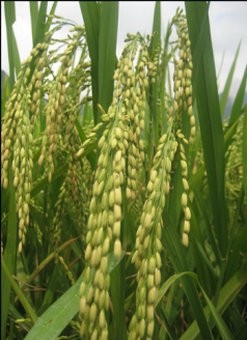|
|||||||||||||||||||||||||||||||||||||||
|
|
||||||||||||||||||||||||||||||||||||||
| INHERENTLY UNREGISTRABLE MARKS IN VIETNAM | |||||||||||||||||||||||||||||||||||||||
|
The reply to the question of whether a mark is inherently registrable in each country may vary depending upon their legislative regulations and practice. For example, hieroglyphics such as Chinese and Japanese characters are inherently registrable in China and Japan, however, they are imperceptible and unmemorable in Vietnam, and as a result, are regarded as inherently unregistrable. Below are the marks that under the Vietnam intellectual property law are inherently registrable. Generic marks Article 74-2(b) of the Vietnam intellectual property law provides that pictures or common names of goods or services in any language are regarded as inherently indistinstive. Common names and pictures of goods or services obviously are the signs that are commonly used and recognised to identify those goods or services among other goods or services. Such names and pictures are necessary for traders and consumers to describe goods and services, and it is not possible to register them as trademarks. If common names and pictures of goods or services are only a part of a trademark sought for protection, it allows such names and pictures to be disclaimed, and does not require them to be deleted from the trademark. Marks widely and customarily used in the trade Article 74-2(b) of the Vietnam intellectual property law and Articles 39-3(d), 39-4(c) of Circular No. 01/2007 guiding the implementation of the intellectual property law provides that signs, pictures, images, emblems or symbols that have been widely and customarily used in a relevant field in Vietnam are deemed to lose their distinctiveness. Marks widely and customarily used in the trade as generic marks are not registrable as trade marks, however, they may constitute a part of trade marks. NETWORK, NET, WEB, .COM, are examples of words which have become customary in the trade.
“A device for a crown and shied with supporters” for cigarettes and tobacco products and for almost all goods and services, “terrestrial globes” are examples of devices which are deemed to have been widely used and become customary in the trade.
Descriptive marks Article 74-2(c) of the Vietnam intellectual property law makes no distinction between signs which serve to designate the time, place and method of production of goods or rendering of services, and the kind, quantity, quality, nature, composition, intended purpose, value or other characteristics of the goods or services to which they are applied. A descriptive mark may be accepted for registration if it has in fact acquired a distinctive character as a result of the use in Vietnam before the date of the application for registration. Marks having the meaning of laudatory (e.g good, best, super, No. 1…), recommending the goods or services to the consumers (e.g “Just What You Need”), or advertising (e.g “Unique creates value” are regarded as descriptive. Marks describing the legal status and domain of activity of business entities, such as “ltd.”, “jsc” or “Pharmaceutical Co.” are inherently indistinstive.
Graphically descriptive marks Article 74-2(đ) of the Vietnam intellectual property law provides that “signs indicating the geographical origin of goods or services are considered to be inherently indistictive, except for those signs which have been widely used and recognized as a trademark or registered as collective marks or certification marks”. Before the 01 July 2006 effective date of the Vietnam intellectual property law, graphically descriptive marks could be registrable upon submitting to the Registrar permissions on the use of geographical names from competent authorities or certified copies of trademark registrations for the marks in the case of overseas geographical names. Below is an example of a graphically descriptive mark registered under the form of a collective mark for the services “buying and selling of vegetables”. TRA QUE is a name of a village renowned by growing vegetables, located near to an ancient town HOI AN of Vietnam.
The Registrar in its practice may not accept a graphically descriptive mark falling within the said provision as a disclaimed matter in the case such a graphically descriptive mark constitutes a part of a trade mark. Deceptively misdescriptive marks Article 73-5 of the Vietnam intellectual property law states that marks are likely mislead, confuse or deceive the public as to the origin, functional parameters, intended purposes, quality, value or any other characteristics of the goods or services are excluded from protection. Below are some marks in the name of Vietnamese applicants (dowloaded from the website of the Registrar) that were refused registration because, among other reasons, they could deceive the public as to the origin of goods and services bearing the marks.
Marks in languages uncommon in Vietnam Article 74-2(a) of the Vietnam intellectual property law provides that letters and words of uncommon languages are regarded as inherently unregistrable except for those which have been widely used and known as a trademark. The concept of letters and words of uncommon languages in Article 74-2(a) is interpreted in Circular No. 01/2007 guiding the implementation of the intellectual property law as “characters of languages that are imperceptible and unmemorable to the common knowledge of Vietnamese consumers (unreadable, incomprehensible and unmemorable), such as characters not of Latin origin: Arabic, Slavonic, Sanskrit, Chinese, Japanese, Korean or Thai characters, etc… except when characters of these languages combine with other components to formulate a distinctive whole or are presented in a graphic form or other special forms. Although the characters of uncommon languages, that combine with other components to formulate a distinctive whole or are presented in a graphic form or other special forms, may qualify for registration as stated above, their registration does not mean that the meaning of the characters of uncommon languages is protected. It only means respectively that they are protected in combination with other components or their graphic presentation is protected. The following are examples of registrations of the trade marks containing letters and words of uncommon languages.
One letter and two unpronounceable letters and numerals Article 74-2(a) of the Vietnam intellectual property law provides that numerals and letters are regarded as inherently unregistrable except for those which have been widely used and known as a trademark. Circular No. 01/2007 guiding the implementation of the intellectual property law clearly clarifies “numerals and letters” failling within the provision as “a Latin-origin mark that consists of only one letter or consists of numerals only, or consists of two letters which cannot be pronounced as a word, even if it is accompanied with numerals, except when it is presented in a graphic form or other special forms”. Two letters consisting of a consonant and a vowel, in general, may be pronounced as a word according to the rules of Vietnamese pronounciation, for example, TA, MO, LE. Two letters being of consonants and some two letters being of vowels are not pronounced as a word, for example, BC, DB or IY, AE. Imperceptible and unmemorable word marks Article 39-3(c) of Circular No. 01/2007 states that a combination of too many letters or words that is imperceptible and unmemorable, such as a sequence of too many characters not arranged according to a given order or rule, or a text or a paragraph, is regarded as being indistinctive except for those which have been widely used and known as a trademark. Simple shape and geometrical marks and too tangled or complicated device marks As clarification of Article 74-2 of the Vietnam intellectual property law in relation to indistinctive device marks, Article 39-3(c) of Circular No. 01/2007 lists the following shape and geometrical marks as being indistinctive.
The Registrar in its practice refuses simple shape and geometrical marks for registration as a trade mark, however, it may not require such marks to be disclaimed in the case of their combination with other elements. Invisible, audible and olfactory marks In order to be qualified as a trade mark, Article 72-1 of the Vietnam intellectual property law provides that, a mark must be invisible. This provision thus excludes all invisible, audible and olfactory marks from trade mark protection.
|
|||||||||||||||||||||||||||||||||||||||
|
|||||||||||||||||||||||||||||||||||||||
|
|||||||||||||||||||||||||||||||||||||||
|
|||||||||||||||||||||||||||||||||||||||














